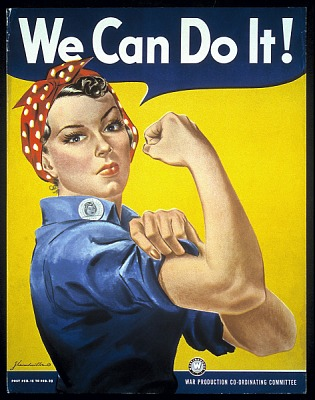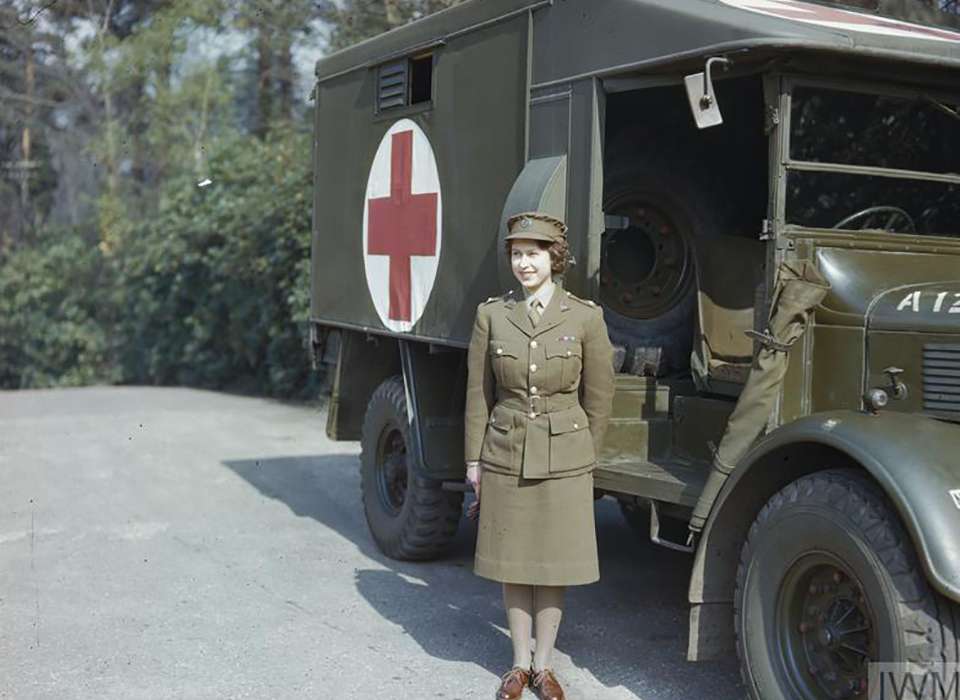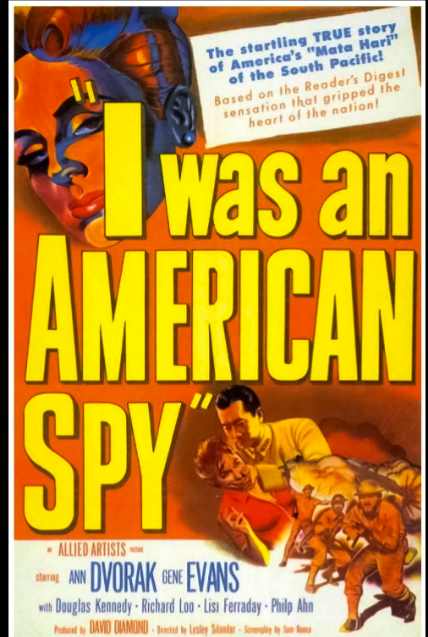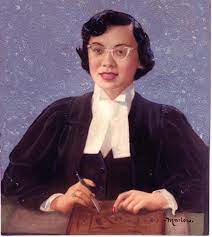Poster, December 1940
 Topics on the Page
Topics on the Page
Rosie the Riveter, Wendy the Welder and the American Homefront
Women in World War II
- English Royalty (Princess Elizabeth, Now Queen Elizabeth)
- Fly Girls (female pilots)
- Top Secret Rosies (Female mathematicians of World War II)
- Code Girls (women code breakers)
- Women's Army Corps (WACs)
- Hazel Ying Lee and Maggie Gee (First Chinese American Women Air Force Service Pilots)
African American Women During the War
- African American Women with the YMCA
 Cross-Links
Cross-Links
Roles for Women in World War II
|
Soldiers/Military
- The Women’s Army Corps (WAC)
- The Six Triple Eight
- Fly Girls: Women Airforce Service Pilots (WASP)
- Jacqueline Cochran
- Hazel Ying Lee and Maggie Gee, Chinese American Pilots
- the Wehrmachthelferinnen (female auxiliaries of the German Wehrmacht)
|
Spies & Espionage
- Code Girls (women code breakers)
- Claire Phillips
- Florence Finch
- the Female Spies of the SOE (Odette Sansom Hallowes, Violette Szabo, Nancy Grace August Wake, Noor Inayat Khan)
|
Nurses & Medicine
- Massachusetts Cadet Nurses
- Red Cross Donut Dollies
- Jane Kendeigh, Field Nurse
- the Angels of Bataan (the 77 American Army and Navy nurses who were captured by the Japanese)
|
|
Workers and Owners
- Rosie the Riveter
- Wendy the Welder
PRIMARY SOURCE: Executive Order 9346 (1943)
|
Political Activists
CROSS-LINK: Eleanor Roosevelt
|
Science/Tech Pathfinders
- Top Secret Rosies
- Code Girls and Code Breakers
- The Manhattan Project "The Calutron Girls"
CROSS-LINK: Hedy Lamarr, Actress and Inventor
|
Women's Wartime Recruitment Video: Click Here!
Rosie the Riveter, Wendy the Welder and the American Homefront During World War II

Millions of women joined the workforce during World War II and transformed their roles from homemakers to supporting their families.
They worked in factories to develop war materials, they joined the military, and after gaining a taste of independence, they rallied to gain equal rights in the workforce.
Rosie the Riveter

- Rosie the Riveter was the cultural icon during the Second World War dedicated to women on the home front.
- As men left to fight abroad, women had to take over the jobs their husbands, brothers, and sons once held.
- These jobs include working on the shipyard and factories that produced war supplies.
- Between 1940-1945 (the end of the European-side of the war), women's participation in the labor force increased from 27% to nearly 37%.
- By the end of the European war in 1945, nearly one in every four women was working outside of their home.
- It is theorized that Rosie's image was inspired by Geraldine Hoff Doyle, a worker in a Navy machine shop during the war.
- Rosie's iconic image is a cultural embodiment of working class women.
For more information on Rosie's character, the real person she was inspired by, and interesting facts regarding women working during World War II, see: History Channel's "Rosie the Riveter"
 The song dedicated to Rosie the Riveter from the 1940s: Rosie the Riveter Song, 1940s
The song dedicated to Rosie the Riveter from the 1940s: Rosie the Riveter Song, 1940s
Social Changes During the War, from Digital History

National WW2 museum page on women in war
- 18 million women across the country were enlisted in the steel mills, foundries, automotive plants and shipyards of America
- 200,000 served in the military

Wendy the Welder
- Women workers helped build battleships across the Pacific Northwest
- Of the four shipyards built by Henry J. Kaiser in Richmond California during the war and the 90,000 personnel of which it employed, approximately one-third were women.
Tending the Homefront: The Many Roles of Bay Area Women during World War II, National Park Service
Selected World War II Records of Federal Agencies in New England, National Archives at Boston
Women and Victory Gardens
 |
| Recruitment Poster, 1940s |
Women's History in Aviation
https://goflightmedicine.com/women-in-aviation-timeline/
Princess Elizabeth: English Royalty in War Efforts during World War II
Princess Elizabeth, April 1945

- Women around the world were joining the war front through labor or medical aid.
- Princess Elizabeth, now Queen Elizabeth II, began her royal duties during the war when she was 13 years old.
- She spent time inspiring both women and children living in Great Britain at the time, from her first broadcasted speech in 1940 on the BBC Children's Hour, to working as a car mechanic towards the end of the war.
- The sight of having a royal woman working in the war inspired women and children to work as a collective during wartime efforts. She is, in some ways, a Rosie the Riveter for British women during the war.
 |
| WASPS in front of a TB-25 Mitchell Trainer, 1944 |
Fly Girls
Female World War II Pilots: The Original Fly Girls.
As the Magazine of History (Volume 24, no. 3, July 2010) points out, "from 1942 to 1944, about one thousand WASPs flew over twelve thousand newly manufactured aircraft from factories to military bases. They also towed targets for gunnery practice and tested repaired aircraft. Despite their skill and sacrifice on the home front (thirty-eight women pilots died in service) they were denied military status and benefits during the war and the program was abruptly ended in 1944, due largely to opposition from male service pilots."
Top Secret Rosies
Les Marguerites Fleuriront ce Soir

Code Girls
More than half the American code-breaking force was female, about 10,000 women
Many were college graduates who had been excluded from math and engineering fields, but were now needed for their talent and expertise.
Source: "What Can We Learn from Women in Wartime," The New York Times (November 12, 2017)
How American Women Codebreakers of World War II Helped Win the War, Smithsonian (October 2017)
The Secret History of the Female Code Breakers Who Helped Defeat the Nazis, Politico Magazine (October 10, 2017)
Overview of Women's Roles in World War II at Khan Academy
Women’s Army Corps (WAC)
The Women’s Army Corps (WAC) of the U.S. Army was created by a law signed by President Franklin D. Roosevelt on 1 July 1943.
- The WAC was converted from the Women’s Army Auxiliary Corps which had been created in 1942 but did not have official military status.
- New WAC recruits underwent four to six weeks of basic training, which included a physical training program, often followed by four to twelve weeks of specialist training.
- First Lady Eleanor Roosevelt and civil rights leader Dr. Mary McLeod Bethune successfully advocated for the admittance of African-American women as enlisted personnel and officers in the WAC, although as in the rest of the Army, segregation prevailed.
- After several units of white women were sent to serve in the European theater, African-American organizations pressed the War Department to extend the opportunity to serve overseas to African-American WACs.
Click here for a history of the Women's Army Corps
Women in the Manhattan Project "The Calutron Girls"
Building the Bomb
Lise Meitner

 Learning plan on teaching the role of Women in the war
Learning plan on teaching the role of Women in the war
It's a Woman's War Too
More lesson plans featuring KWL charts
 Women Heroes of World War II: The Pacific Theatre. 15 Stories of Resistance, Rescue, Sabotage & Survival. Kathryn J. Atwood. Chicago Review Press, 2016
Women Heroes of World War II: The Pacific Theatre. 15 Stories of Resistance, Rescue, Sabotage & Survival. Kathryn J. Atwood. Chicago Review Press, 2016

Women Spies
The movie poster invites students to analyze the media messages.

I Was An American Spy (1951) is a film about Claire Phillips, an American of Filipino descent who spied on the Japanese during World War II and was captured, tortured, and sentenced to death before being rescued.
- She was a stage actress and singer who grew up in Portland and is noted for heroism as a spy and humanitarian during the Japanese occupation of the Philippines in World War II.
- She ran a nightclub for enemy personnel in occupied Manila, secretly using the profits to buy and smuggle food and medicine to starving American soldiers in Japanese prisons.
- Convicted of espionage and sentenced to die, Army Rangers rescued her during Manila’s 1945 liberation.
She has a memorial in the Oregon State Capitol.
https://oregoncapitolfoundation.org/claire-phillips-memorial/
10 Great Films about Women in Wartime
https://www2.bfi.org.uk/news-opinion/news-bfi/lists/10-great-films-about-women-wartime
Wings (1927)
https://www.loc.gov/static/programs/national-film-preservation-board/documents/wings.pdf

This movie was the only silent movie from the silent era to win an Academy Award
It also showed the first kiss between two men on screen
Although the story is mainly about the male pilots and the war, the film starred Clara Bow. Here is one of the movie posters.
Hazel Ying Lee and Maggie Gee, Chinese American Pilots
Maggie Gee and Hazel Ying Lee were the first two Chinese Americans in the Women Air Force Service Pilots
Hazel Ying Lee, 1932

For an inspiring picture book about the only other Chinese-American woman who flew with the WASP, we highly recommend "The Fearless Flights of Hazel Ying Lee" for ages 5 to 9 at https://www.amightygirl.com/fearless-flights-hazel-ying-lee
From A Mighty Girl Fb post:
Portrait of Margaret Gee

For Women in Aviation Week, we're celebrating Maggie Gee, the pioneering aviator and physicist who became one of only two Chinese-American women to fly with the Women Airforce Service Pilots or WASP during WWII.
When the United States entered WWII in 1941, the Berkeley, California native was eager to support the war effort and dropped out of her freshman year of college to become a draftperson for engineers working on Navy ships.
Gee's dream, however, was to follow in the footsteps of her childhood hero Amelia Earhart and become a pilot. After saving up the $800 she needed for six months of flight training, she moved to Nevada to learn to fly. Soon after, she was accepted into the highly selective WASP training program and earned her silver WASP wings. While serving as a WASP, Gee worked as a tow target pilot at the Las Vegas Army Air Field, pulling targets for gunners to use for practice -- with live ammunition.
Following the war, Gee returned to the University of California at Berkeley, and eventually completed her graduate studies in physics. She worked as a research physicist at Lawrence Livermore National Laboratory for thirty years, researching topics ranging from cancer to fusion energy. In 2010, Gee, along with all living WASP pilots, received the Congressional Gold Medal in recognition of their service. Gee passed away in 2013 at the age of 89 and, throughout her long life, she remained committed to making a difference in the world: "I’m very optimistic about the world and people... it will be all right... You can make changes. I think just one small person can make a little bit of change."
The story of these heroic women is told in a thrilling photo-filled book for young readers 10 and up: "Fly Girls: The Daring American Women Pilots Who Helped Win WWII" at https://www.amightygirl.com/fly-girls-women-pilots
For an excellent book for adult readers about the women of WASP, check out "The Women with Silver Wings" at https://www.amightygirl.com/the-women-with-silver-wings
There is also a bestselling historical fiction novel for adults telling the story of a young WASP pilot: "The Flight Girls" at https://amzn.to/2EQPQzY
Several WASPs are also profiled in the book “Women Aviators: 26 Stories of Pioneer Flights, Daring Missions, and Record-Setting Journeys” for teens and adults, ages 13 and up, at https://www.amightygirl.com/women-aviators
Soviet Women Snipers
This video discusses the Soviet women's sniper corps in WWII.
https://youtu.be/n_qnd839mQs
African American Women with the YMCA
Helen Curtis, et.al. YMCA Paris and the Army Nurse Corps
https://share.america.gov/these-african-american-women-helped-in-world-war-i/
https://muse.jhu.edu/article/711148
Women in Medicine and Nurses
- Jane Kendeigh- a 22 year old ensign who fought in Iwo Jima and Okinawa on the Pacific island hopping campaign.
- Kendeigh was 1 of 48 highly trained field nurses to complete and learn how to help recognize and treat advanced battle field wounds and learn to be able to fight in hand to hand combat.
- Kendeigh and her fellow field nurses are responsible for evacuating 2,393 Marines and Sailors at the battle of Iwo Jima.
https://www.pacificwarmuseum.org/about/news/blog-post-navy-flight-nurse-jane-kendeigh
Comments (0)
You don't have permission to comment on this page.